Original color lithograph 'Scene Militaire' by Roger de la Fresnaye. Lithograph printed from an original painting made by the author in France, circa 1917. Published in France by Fernand Mourlot, circa 1968. Framed and signed in the stone. In good original condition, with minor wear consistent with age and use, preserving a beautiful patina. About the Artist: Roger de La Fresnaye (11 July 1885 – 27 November 1925) was a French Cubist painter. La Fresnaye was born in Le Mans where his father, an officer in the French army, was temporarily stationed. The La Fresnayes were an aristocratic family whose ancestral home, the Château de La Fresnaye, is in Falaise. His education was classically based, and was followed from 1903 to 1904 by studies at the Académie Julian in Paris, and from 1904 to 1908 at the École des Beaux-Arts.[1] From 1908 he studied at the Académie Ranson under Maurice Denis and Paul Sérusier, whose joint influence is evident in early works such as Woman with Chrysanthemums, 1909. This demonstrates the dreamlike symbolist ambience and stylistic character of work by the Les Nabis group. Fernand Mourlot: Fernand Mourlot was born on 5 April 1895 in Paris, France. He was the sixth of nine children of Jules Mourlot and Clemence Gadras. In 1911, at the age of 16, he was admitted as a student to the École nationale supérieure des arts décoratifs where he studied drawing. After his studies he joined his father and older brothers in the family business, the "Imprimerie J. Mourlot". In 1914, Jules Mourlot, through the sale of Russian bonds, would begin expanding the studios, eventually opening a second location on rue St. Maur and purchasing Imprimerie Bataille on rue de Chabrol. That year, the three eldest Mourlot brothers were also drafted into the French Army and sent to the front. Paul, the oldest brother, would be killed shortly after the start of the war. Georges and Fernand would remain in the army through 1918 and would both participate in many battles including the Battle of Verdun. While at the front, they would learn in 1917 of the death of their mother Clemence. Upon their return, they rejoined their father in the business. Georges, the eldest, would head the operations of the studios, while Fernand would concentrate on the artistic side and business development. At the death of their father in 1921, the name of the studios was changed to "Mourlot Freres" (Mourlot Brothers), with Georges and Fernand heading the company, while the other siblings became minority holders in the business. n 1923, Mourlot won a contract to produce an original lithographic poster to promote an exhibition of French Modern Art in Copenhagen, Denmark. A few years later, through the friendship he had developed with the writer Georges Duhamel, himself a former veteran of World War I, Fernand Mourlot met the painter Maurice de Vlaminck. In 1926 the three men worked closely on the production of what became the first of many illustrated books printed by Mourlot Studios. 1930 marked the start of another important and long lasting cooperation: the one between Mourlot and the director of the French National Museums. That year, the Studios printed a poster for the hundred year anniversary of Romanticism and another poster to promote the retrospective of Delacroix's work at the Musée du Louvre. These were followed in 1932 by a poster for an exhibition of Édouard Manet's work at the Musée de l'Orangerie, and in 1934, a poster of Honoré Daumier's work at the Bibliothèque Nationale. By 1937, Mourlot Studios had become the largest printer of artistic posters and was often hired by French and foreign museums, such as the Tate Gallery, to produce high quality posters for their upcoming exhibitions. That year, two more historically important posters for Pierre Bonnard and Henri Matisse would be created for the exhibition of the Art Independent at the Petit Palais. They would lead to a crucial meeting between Mourlot and Matisse and would usher the next chapter in the history of the Mourlot Studios.
Litografia originale a colori "Scene Militaire" di Roger de la Fresnaye. Litografia stampata da un dipinto originale realizzato dall'autore in Francia, nel 1917 circa. Pubblicata in Francia da Fernand Mourlot, circa 1968. Incorniciata e firmata nella pietra. In buone condizioni originali, con lievi usure dovute all'età e all'uso, che conservano una bella patina. Informazioni sull'artista: Roger de La Fresnaye (11 luglio 1885 - 27 novembre 1925) è stato un pittore cubista francese. La Fresnaye nacque a Le Mans dove il padre, ufficiale dell'esercito francese, era temporaneamente di stanza. I La Fresnaye erano una famiglia aristocratica la cui dimora ancestrale, il Castello de La Fresnaye, si trova a Falaise. La sua formazione è di tipo classico, seguita dal 1903 al 1904 dagli studi all'Académie Julian di Parigi e dal 1904 al 1908 all'École des Beaux-Arts.[1] Dal 1908 studia all'Académie Ranson sotto la guida di Maurice Denis e Paul Sérusier, la cui influenza congiunta è evidente in opere giovanili come Donna con crisantemi, 1909. Questo quadro dimostra l'atmosfera simbolista onirica e il carattere stilistico delle opere del gruppo Les Nabis. Fernand Mourlot: Fernand Mourlot nacque il 5 aprile 1895 a Parigi, in Francia. Era il sesto dei nove figli di Jules Mourlot e Clemence Gadras. Nel 1911, all'età di 16 anni, fu ammesso come studente all'École nationale supérieure des arts décoratifs dove studiò disegno. Dopo gli studi si unisce al padre e ai fratelli maggiori nell'azienda di famiglia, la "Imprimerie J. Mourlot". Nel 1914 Jules Mourlot, grazie alla vendita di obbligazioni russe, iniziò ad ampliare gli studi, aprendo una seconda sede in rue St. Maur e acquistando l'Imprimerie Bataille in rue de Chabrol. Quell'anno, anche i tre fratelli maggiori Mourlot furono arruolati nell'esercito francese e inviati al fronte. Paul, il fratello maggiore, sarà ucciso poco dopo l'inizio della guerra. Georges e Fernand rimarranno nell'esercito fino al 1918 e parteciperanno entrambi a molte battaglie, tra cui quella di Verdun. Mentre erano al fronte, nel 1917 appresero della morte della madre Clemence. Al loro ritorno, si ricongiunsero al padre nell'azienda. Georges, il maggiore, avrebbe diretto le operazioni degli studios, mentre Fernand si sarebbe concentrato sulla parte artistica e sullo sviluppo degli affari. Alla morte del padre, nel 1921, il nome degli studi fu cambiato in "Mourlot Freres" (Fratelli Mourlot), con Georges e Fernand a capo dell'azienda, mentre gli altri fratelli divennero soci di minoranza. n 1923, Mourlot vinse un contratto per la produzione di un manifesto litografico originale per promuovere una mostra di arte moderna francese a Copenaghen, in Danimarca. Qualche anno dopo, grazie all'amicizia nata con lo scrittore Georges Duhamel, anch'egli ex veterano della Prima Guerra Mondiale, Fernand Mourlot incontra il pittore Maurice de Vlaminck. Nel 1926 i tre lavorano a stretto contatto alla produzione di quello che diventerà il primo di molti libri illustrati stampati dagli Studi Mourlot. il 1930 segna l'inizio di un'altra importante e duratura collaborazione: quella tra Mourlot e il direttore dei Musei nazionali francesi. In quell'anno, gli Studios stamparono un manifesto per il centenario del Romanticismo e un altro manifesto per promuovere la retrospettiva dell'opera di Delacroix al Musée du Louvre. Nel 1932 seguirono un manifesto per una mostra di Édouard Manet al Musée de l'Orangerie e nel 1934 un manifesto per le opere di Honoré Daumier alla Bibliothèque Nationale. Nel 1937, i Mourlot Studios erano diventati il più grande stampatore di manifesti artistici e venivano spesso ingaggiati da musei francesi e stranieri, come la Tate Gallery, per produrre manifesti di alta qualità per le loro mostre imminenti. Quell'anno, altri due manifesti storicamente importanti per Pierre Bonnard e Henri Matisse sarebbero stati creati per la mostra dell'Art Independent al Petit Palais. Questi manifesti porteranno a un incontro cruciale tra Mourlot e Matisse e inaugureranno il capitolo successivo della storia degli Studi Mourlot.
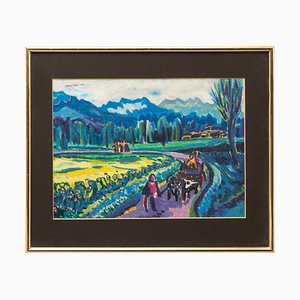
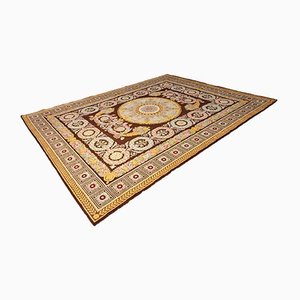
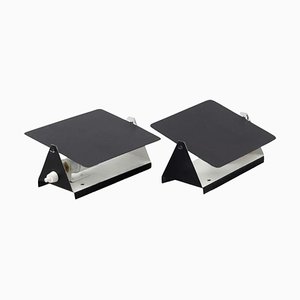






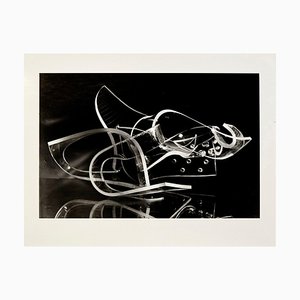


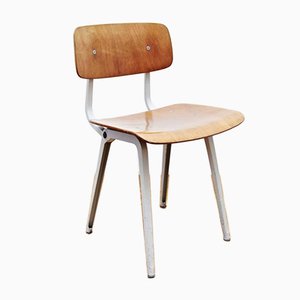
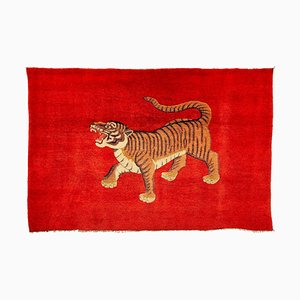




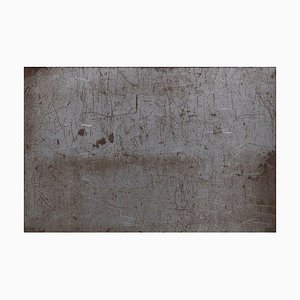
Contattaci
Fai un'offerta
Abbiamo notato che sei nuovo su Pamono!
Accetta i Termini e condizioni e l'Informativa sulla privacy
Contattaci
Fai un'offerta
Ci siamo quasi!
Per seguire la conversazione sulla piattaforma, si prega di completare la registrazione. Per procedere con la tua offerta sulla piattaforma, ti preghiamo di completare la registrazione.Successo
Grazie per la vostra richiesta, qualcuno del nostro team vi contatterà a breve.
Se sei un professionista del design, fai domanda qui per i vantaggi del Programma Commerciale di Pamono